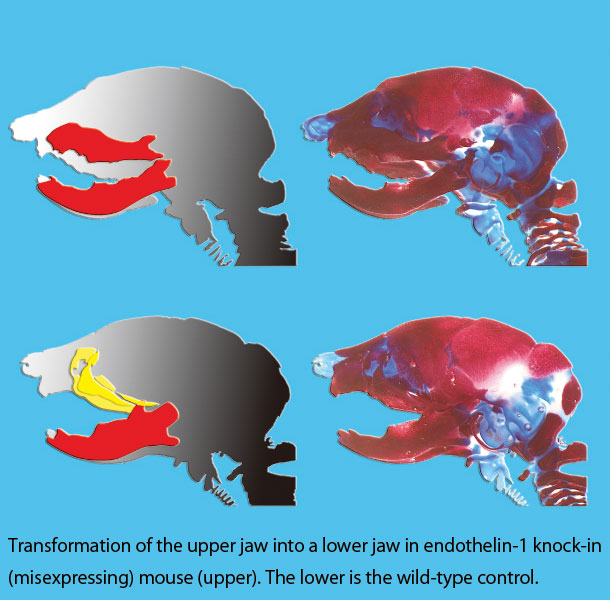Identification of a molecular switch determining maxillomandibular morphogenesis
Articulated jaws are highly conserved structures characteristic of gnathostome evolution. Epithelial-mesenchymal interactions within the first pharyngeal arch (PA1) instruct cephalic neural crest cells (CNCCs) to form the different skeletal elements of the jaws. We have previously revealed endothelin-1 (Edn1), a 21-amino acid biologically active peptide, is necessary for lower jaw formation through the activation of Dlx5/6, mammalian orthologues of Drosophila homeobox gene Distalless. Using mouse genetics approach, now we found that the Edn1 signaling is sufficient for the conversion of the maxillary arch to mandibular identity. Constitutive activation of endothelin type-A receptor (Ednra) induced the transformation of upper jaw, maxillary, structures into lower jaw, mandibular, structures with duplicated Meckel’s cartilage and dermatocranial jaws constituted by four dentary bones. Misexpression of Hand2, a bHLH transcription factor downstream to Dlx5/6, in the Ednra domain caused a similar transformation. Skeletal transformations are accompanied by neuromuscular remodeling. Ednra is expressed by most CNCCs, but its constitutive activation affects predominantly PA1. We conclude that after migration CNCCs are not all equivalent, suggesting that their specification occurs in sequential steps. Furthermore, we show that, within PA1, CNCCs are competent to form both mandibular and maxillary structures and that an Edn1 switch is responsible for the choice of either morphogenetic program.
Program member
Hiroki Kurihara (Department of Physiological Chemistry and Metabolism, Graduate School of Medicine)

